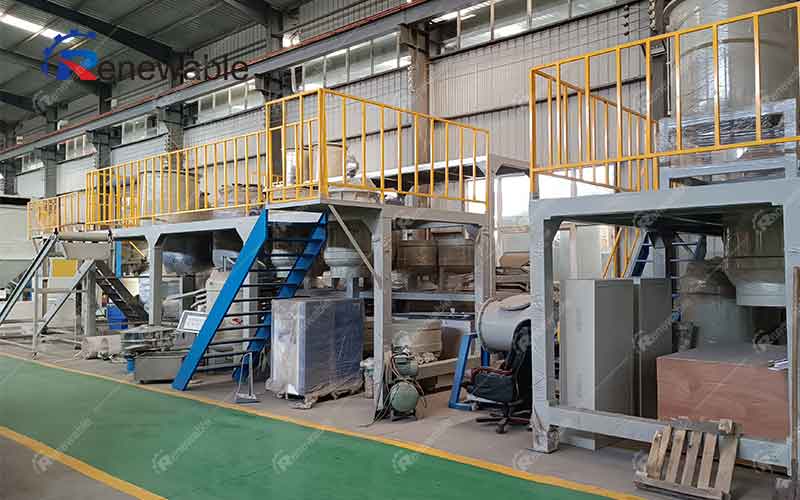The value of gold in electronic devices
Against the backdrop of the increasingly rapid replacement of electronic products, we are often faced with the elimination of outdated electronic devices such as mobile phones and computers, which are often regarded as electronic waste and are shelved. However, simply handing these devices over to recyclers for disposal often means that we lose their original value. In fact, these devices contain many valuable resources, such as gold, which can be extracted through professional technology and made into valuable products such as jewelry.

Gold is widely used in the field of electronics. Our notebooks, mobile phones, cameras and even printers contain a certain amount of gold because of its excellent stability and conductivity, which can ensure the stable operation of the equipment. Therefore, a layer of gold is usually plated on the contact points of the PCB circuit board to prevent it from being oxidized and to ensure good contact. However, if we simply hand over these electronic wastes to recyclers for disposal, it is equivalent to giving away this precious gold resource.
1. Main gold-plated parts and extraction methods
In fact, by mastering the right technology, we can easily extract gold from these electronic wastes. Over time, these refined gold pieces can even be made into a beautiful gold ring. Next, we will explore how to find the gold-plated parts in electronic waste.
The gold-rich parts of electronic waste include processor pins and PCB contact points. The pins of processors (CPUs) and other electronic chips are the most gold-rich parts because they are closely related to the operation of the equipment. In order to extract gold from these parts, we only need to cut the pins with pliers and perform corresponding gold refining.
In PCB circuit boards, contact points and retaining rings are the most concentrated parts of gold plating. In order to more efficiently handle these gold-rich areas, we can easily disassemble them with the help of tools for concentrated gold refining.
2. Cleaning and gold foil extraction of PCB circuit boards
Cleaning and preparation
Next, we can discuss how to clean PCB circuit boards. During the cleaning process, use a brush to clean the PCB to remove impurities and ensure that it is dry for subsequent processing. It is recommended to use a brush for cleaning and ensure that the circuit board is thoroughly dry. This step is designed to remove impurities and oxidized metals on the circuit board, keep the raw materials clean, and simplify the subsequent processing process.
Use and precautions of etching solution
We prepare a mixture of sodium peroxide and toilet cleaner to form an etching solution, which reacts with the nickel layer to separate the gold foil. Mix these ingredients in a 1:1 ratio and then completely immerse the circuit board in the resulting etching solution. The purpose of this step is to separate the gold foil from the nickel layer on the circuit board, because the nickel can react with the solution and dissolve, leaving only the gold foil.
Please note that this operation should be performed outdoors in a well-ventilated environment, because chlorine gas is produced during the chemical reaction. If it is performed indoors, be sure to wear a mask to ensure safety. During this process, please closely observe the changes of the circuit board. Let the circuit board immersed in the etching solution stand for about 1-2 days until the nickel layer is completely dissolved. During this period, the gold foil will gradually peel off the circuit board and may exist in the solution in a precipitated or floating state. If you need to ensure that the gold foil is completely detached, you can extend the soaking time appropriately.
Filtering and collecting gold
Take the soaked circuit board out of the etching solution, use a plastic stick to carefully scrape off the gold attached to the circuit board and put it into the solution. Next, find a plastic cup with a slightly larger capacity, pour the solution containing gold into it, and then add an equal amount of clean water to dilute it. During the entire operation, be sure to wear gloves to ensure safety.
Pour the solution containing gold into another empty cup, and pre-fix a coffee filter or other suitable filter material. The decomposed gold will remain on the filter through filtration. After that, turn the filter upside down on a clean cup and backwash it with clean water to get pure gold particles. Gold is collected through the filter and then backwashed with water to get pure gold particles. Gloves must be worn to ensure safety.
3. Smelting and gold bar making
Steps for making gold bars
Take the filtered pure gold particles out of the water, we can collect and store them in a bottle, and gradually accumulate them. Although each piece of gold foil is as small as a fly leg, it will accumulate over a long period of time, and the number is considerable, enough to make a beautiful gold ring. If conditions permit, we can further place the extracted gold foil on a heating dish, and use a mold to cool and solidify it into a gold bar. Attention should be paid to heating and mold preparation.